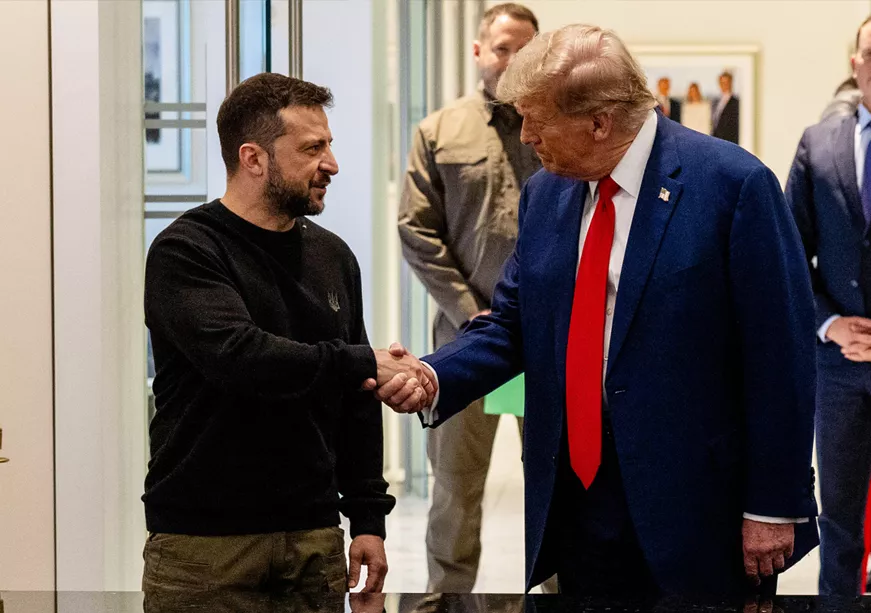
Image Source: Getty
De-dollarisation has been on the agenda globally for almost a decade. President Barack Obama first warned of a potential blowback against the dollar should the United States (US) leave the Joint Comprehensive Plan of Action (JCPOA) back in 2015. In his speech at the American University in Washington, D.C., he warned that an overuse of sanctions would also mean eventually cutting off countries which are major buyers of US debt, like China. These words have proved prophetic over time as frustration with the US weaponising the dollar to suit its needs boil over.
A more recent example of ‘overusing’ the sanction threat was with Colombia when the latter refused to accept an aircraft carrier with deported Colombian immigrants.
In 2018, when the Trump administration pulled out of the JCPOA, it sparked a backlash in Europe and a movement to reduce the influence of the dollar and replace it with the euro. In 2022, when Russian banks were removed from the Society for Worldwide Interbank Financial Telecommunication (SWIFT) system as a reaction to the Russian-Ukraine war, there was general unease with which a system which had thus far been seen as a common good was weaponised to cripple an economy. A more recent example of ‘overusing’ the sanction threat was with Colombia when the latter refused to accept an aircraft carrier with deported Colombian immigrants. It is significant to note that Colombia is also seeking membership to the BRICS.
It is as Mikael Wigell observed for the World Economic Forum—SWIFT is used to weaponise the economy for strategic reasons as part of foreign policy. This unsurprisingly leads to pushback from sanctioned countries and those countries which are dependent on these partners for essential raw materials.
A lot has been said about de-dollarisation and financial risk reduction in recent times. Attempts to find avenues of trading outside of the dollar are treated at extremes of suspicion and euphoria depending on which side of the coin you land. A similar phenomenon is seen when discussing a common BRICS currency.
According to data released by SWIFT, the Chinese renminbi (RMB) became the fourth most active currency for global payments in November 2024. It accounted for 3.89 percent of the share of the currency used for global payments by value. The US dollar, meanwhile, accounts for 48.68 percent of global payments. While the use of the RMB has increased and continues to grow at an unprecedented rate, it is unlikely to catch up to the dollar any time soon. One of the reasons for this will very likely be the experience countries are currently going through of the negatives of being dollar-dependent for trade. Countries would not want to exchange one vulnerability for another.
One of the reasons for this will very likely be the experience countries are currently going through of the negatives of being dollar-dependent for trade.
However, given the expected impact on the global economy and ways of trading, the reactions to discussions around alternatives to the dollar easily slip into political rhetoric. The most recent being Donald Trump’s announcement that the BRICS would be faced with 100 percent tariff increases if they actively attempt to split from the dollar.. A dominant dollar lowers the cost of borrowing and debt services for the US government. However, overdependence on the dollar also means that US monetary policy can have negative spillovers for other countries.
On the other hand, while revolutionary on paper, there are several reasons why the BRICS, despite its growing convening power, is unlikely to move towards a common currency in the near term. First, economic realities must be considered. The BRICS members, including the expanded BRICS, have different levels of development and capacity to take on debt. The European example is a cautionary tale for BRICS. The 2008 Financial Crisis and the experience of Portugal, Ireland, Italy, Greece, and Spain, pejoratively called the PIIGS countries, is exhibit A. Rich European countries underwrite the euro and therefore, countries within the Eurozone with different development levels become imposters in the system. They were not, in fact, fiscally capable of maintaining debt levels and interest rates but had to maintain them. The crisis was a lesson on how to manage a common currency with differing development levels of the so-called European core and periphery countries. These countries have lived through years of austerity to now be growing at a pace faster than Germany or France, but they are still playing catch-up. For example, Germany’s GDP (US$ 4.43 trillion) is roughly double Italy’s (US$ 2.19 trillion) even today.
Second and most relevant are geopolitical realities. Old and new members have long-standing strategic rivalries which would preclude the idea of tying their fiscal destinies. The Sino-Indian and United Arab Emirates-Iran bilateral relations are cases in point. Attempts at a common currency would directly impact the idea of the BRICS being a grouping of equal partners. IBSA will not agree to become a junior partner in a grouping where they have been founding members and a driving force.
The Sino-Indian and United Arab Emirates-Iran bilateral relations are cases in point. Attempts at a common currency would directly impact the idea of the BRICS being a grouping of equal partners.
That said, there is a consensus amongst the BRICS members on the need for de-dollarisation through other means. President Lula de Silva of Brazil has been quoted asking the question of why we cannot trade in our currencies in a post gold standard world. With Brazil taking on the BRICS presidency this year, local currency trading and agreed rules for the same will be high on the agenda as outlined in their announced priorities. The grouping is likely to put energy into finding ways to adapt India’s UPI, which is already available in at least seven other countries, including the UAE, which is now a BRICS member and Central Bank Digital Currencies (CBDCs). This would not preclude the use of the SWIFT system but would create alternatives.
SWIFT has commissioned research to show the negative impact of financial fragmentation as costs of transactions increase. This does not, however, account for innovation in methods of transacting, including UPI, CBDCs, and local currency trading.
Reducing vulnerabilities in the international financial architecture is in the interest of the global order in the long term. As President Obama had predicted, there has been a loss of trust in the SWIFT system that will be hard to recover. De-dollarisation is not a unilateral action but a reaction to observed trends which will have to take their course.
Jhanvi Tripathi is an Associate Fellow at the Observer Research Organisation
The views expressed above belong to the author(s). ORF research and analyses now available on Telegram! Click here to access our curated content — blogs, longforms and interviews.




 PREV
PREV


